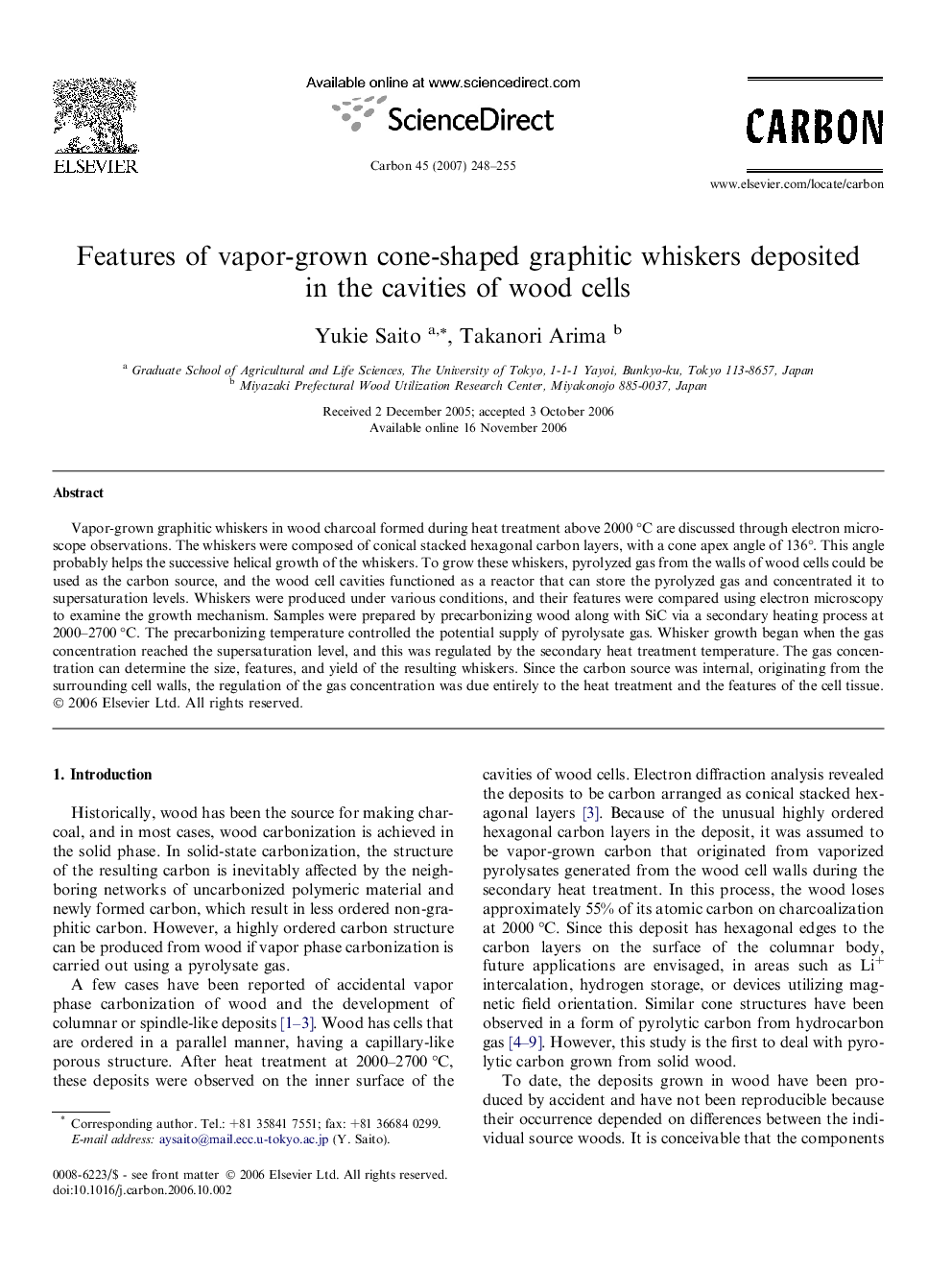| Article ID | Journal | Published Year | Pages | File Type |
|---|---|---|---|---|
| 1419079 | Carbon | 2007 | 8 Pages |
Vapor-grown graphitic whiskers in wood charcoal formed during heat treatment above 2000 °C are discussed through electron microscope observations. The whiskers were composed of conical stacked hexagonal carbon layers, with a cone apex angle of 136°. This angle probably helps the successive helical growth of the whiskers. To grow these whiskers, pyrolyzed gas from the walls of wood cells could be used as the carbon source, and the wood cell cavities functioned as a reactor that can store the pyrolyzed gas and concentrated it to supersaturation levels. Whiskers were produced under various conditions, and their features were compared using electron microscopy to examine the growth mechanism. Samples were prepared by precarbonizing wood along with SiC via a secondary heating process at 2000–2700 °C. The precarbonizing temperature controlled the potential supply of pyrolysate gas. Whisker growth began when the gas concentration reached the supersaturation level, and this was regulated by the secondary heat treatment temperature. The gas concentration can determine the size, features, and yield of the resulting whiskers. Since the carbon source was internal, originating from the surrounding cell walls, the regulation of the gas concentration was due entirely to the heat treatment and the features of the cell tissue.
